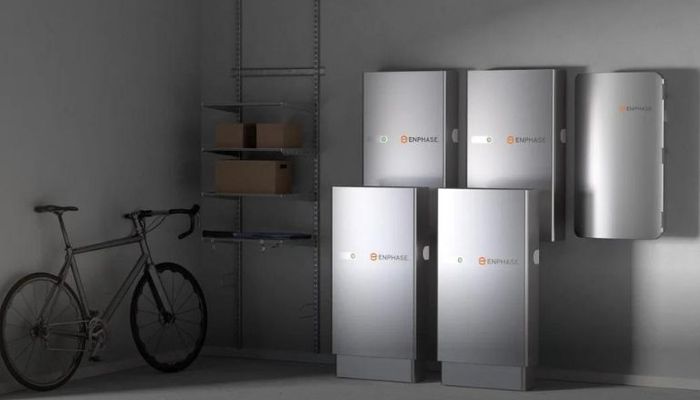Net Metering 3.0: What California Residents Must Know

Are you considering going solar in California? Then you need to know about Net Energy Metering 3.0 (NEM 3.0) and how it can impact your solar journey.
So let's delve into the key aspects of NEM 3.0 and understand what it means for homeowners who want to switch to solar energy in the Golden State.
Net Metering 3.0 Explained
When your solar panels generate power, that power is used to run your household appliances first. And then, any excess power that is not immediately needed is fed to the electrical grid. These excess kilowatt-hours (kWh) going into the grid are known as exports.
1996 - 2016: Under California’s original net metering policy, solar system owners received a one-to-one credit for each kilowatt-hour (kWh) of excess electricity they exported to the grid. So if you gave the grid 1 kWh, you got 1 kWh back from the grid later, at no charge.
2016 - 2023: Under NEM 2.0, a one-time interconnection fee was introduced as well as Time-of-Use (TOU) rates that varied based on peak, off-peak and shoulder periods of the day. While these changes had an impact on the cost per kWh, it wasn’t drastic, and esports were still credited at high rates.
2023: With NEM 3.0 coming into effect on April 15, the export rate for residential solar electricity was reduced from an average of 30 cents per kWh to 8 cents per kWh, a significant 75% difference! Export crediting now follows a complicated schedule based on the time of day. For example, the cost is higher during peak evening hours in the summer, but lower during off-peak times.
Here is a breakdown comparing NEM 2.0 to NEM 3.0:
| NEM 2.0 | NEM 3.0 | |
| Solar Export Rates | $.30+/kWh | $.08/kWh |
| Interconnection Fee | $75-$150 one-time fee | $10-$15 per month |
| Battery System Use | Self-consumption and backup | Self-consumption and backup |
| Lifetime Savings on Solar | $10,000-$40,000 | $3,000-$10,000 |
| Estimated Payback Time | 4-6 years | 8-10 years |
How NEM 3.0 Came Into Effect
Back in August 2020, the California Public Utilities Commission (CPUC) proposed and initiated a reform of NEM 2.0. The following year, on January 13, the solar industry and consumers fought back. Roughly 3,000 solar consumers, faith leaders, environmentalists, climate activists and solar industry workers joined forces to rally outside the doorsteps of the CPUC offices in San Francisco and Los Angeles. This was the largest solar demonstration in American history!
GoGreenSolar team members were present at the rally in Los Angeles, fighting for consumers’ rights to generate their own power from the sun without unfair taxation.
The large turnout at the rally caught the attention of State officials. The CPUC re-wrote the NEM 3.0 policy. While the new rules did reduce the incentives for installing solar, there was still enough payback to make solar worthwhile.
On December 15, 2022, this new net metering 3.0 policy was put up to a vote and passed unanimously. NEM 3.0 officially went into effect on April 14, 2023.
What to Do If You’re a California Resident Considering Solar
Installing a solar energy system can still make economic sense under the NEM 3.0 rules. The key is to avoid exporting your solar power to the grid. This means installing a smaller system and/or adding batteries.
Install a smaller solar system: If you install a system that offsets 75% of your usage, you will not be backfeeding as much power to the grid compared to a system that offsets 100%. You will still have a little bit of an electric bill but you will have a better payback on your solar investment.
Add batteries: Another way to avoid feeding power to the grid is to install solar batteries. This way you can store the excess power generated during off-peak times when the export rate is low. And then you can use this stored energy or sell back to the utility company during peak times when electricity rates are high.
FAQ about NEM 3.0
This new net metering policy raised a lot of questions, so let’s answer some of the most common.
How does NEM 3.0 affect commercial solar?
Commercial export rates did change, but not as much as residential. Depending on your electric rate, it is still possible to achieve a 7-year payback time on your investment into solar power.
Is NEM 3.0 retroactive?
No. All residents who currently have solar under the NEM 2.0 rules are grandfathered on those rules for 20 years from their original interconnection date.
Does NEM 2.0 transfer to new owners?
The net metering agreement is tied to the meter number, so if the home is sold, the new owners can continue to operate under the NEM 2.0 rules until 20 years from the date the system was originally installed.
Is going solar worth it under NEM 3.0?
Yes. If you do it right. Installing a smaller solar might be more cost-beneficial. Also, adding the right amount of batteries can make a difference on payback. And last, a DIY installation can cut your costs in half!
How much is the NEM 3.0 connection fee?
The interconnection fee for the new net billing is $10-$15 per month.
The Bottom Line on Solar Under California’s NEM 3.0
Don't navigate this complex landscape alone. GoGreenSolar is here to be your trusted guide throughout your solar journey. With our expertise and deep understanding of the industry, we can provide personalized advice and help you choose the right solar system. From evaluating the financial benefits to navigating policy changes, our team is dedicated to ensuring your transition to solar power is smooth and successful.
Take the first step towards a greener future and reach out to GoGreenSolar today.






